FWW Poll: The Strongest Joint
In the latest Knots poll, 7 of 10 woodworkers say a mortise and tenon makes the strongest joint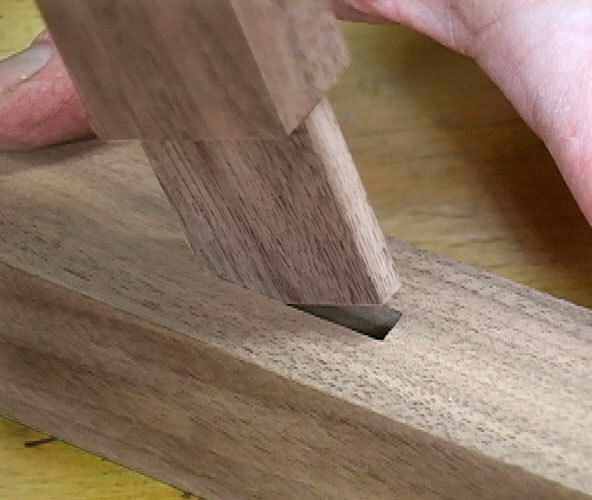
The mortise-and-tenon joint is most woodworkers’ choice for strength, according to the latest poll on Knots, the online forum at FineWoodworking.Com. To be precise, we asked what joint was strongest against racking forces in stock measuring 2-1/2 by 3/4 in. Mortise-and-tenon joints received 690 votes, far more than any other choice and 20 times more than floating tenon joinery. The graph below gives the details.
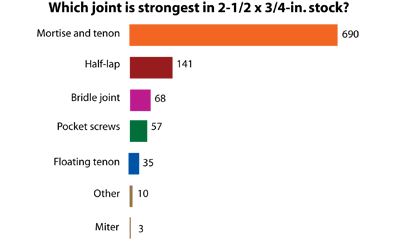
This poll drew a very heavy response–1,004 votes in a week, much more than other recent Knots polls. Voting ended on Jan. 24.
Not only did the poll draw plenty of votes, it also attracted numerous critical comments, such as these:
What’s the point of a question like this? Everyone (most woodworkers) knows that mortise-and-tenon is the strongest. It might be more interesting to know which joint is preferred in a particular application, with all real world factors accounted.
Is this a trick question?
Given the ambiguous nature of this question and the relative impossibility of answering it without substantially more information, I have a great question for your next poll: How long is a stick?
The poll also generated a lively discussion about joint strength. Several of the woodworkers who joined in felt that a half-lap joint or bridle joint might be stronger than the others. Here’s what some respondents had to say:
Using a pinned bridle joint with today’s adhesives seems to make the most sense to me.
Half laps are as strong as the glue and wood you use, where as mortise-and-tenon joints are only as strong the wood you use.I voted for the bridle joint since it has the largest gluing surfaces. Mechanical joint locking is just for decoration and sentiment with modern glues.
When a piece breaks, it almost never breaks on the glue line. Which suggests to me that the glued lumber is stronger where it’s glued, than where it is glue-free. For that reason I go for the floating mortise. You can put as long a tenon as you want, thereby making more of the piece less breakable.
And, as usual, some respondents couldn’t resist some humor:
I voted “other” as nails weren’t offered as a choice. Actually I would use just one nail. This will allow the joint to flop all over the place so the wood won’t get broken.
Half lap, Titebond II, hydraulically clamped, pinned with carriage bolts and fender washers and reinforced with angle iron, wrapped in kevlar saturated with epoxy resin and kept in a cool dark place.
The poll is an unscientific but, we hope, entertaining regular feature of FineWoodworking.Com. There’s a new poll on the home page.
Fine Woodworking Recommended Products

Veritas Precision Square

Leigh Super 18 Jig

Olfa Knife
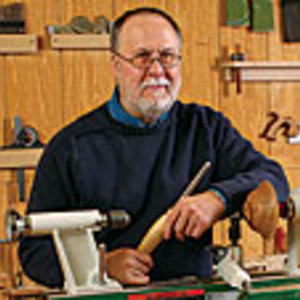




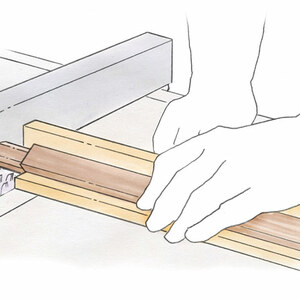
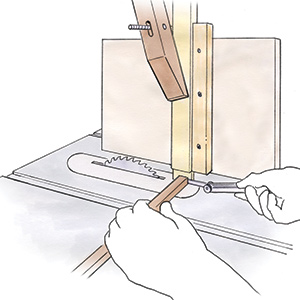















Log in or create an account to post a comment.
Sign up Log in